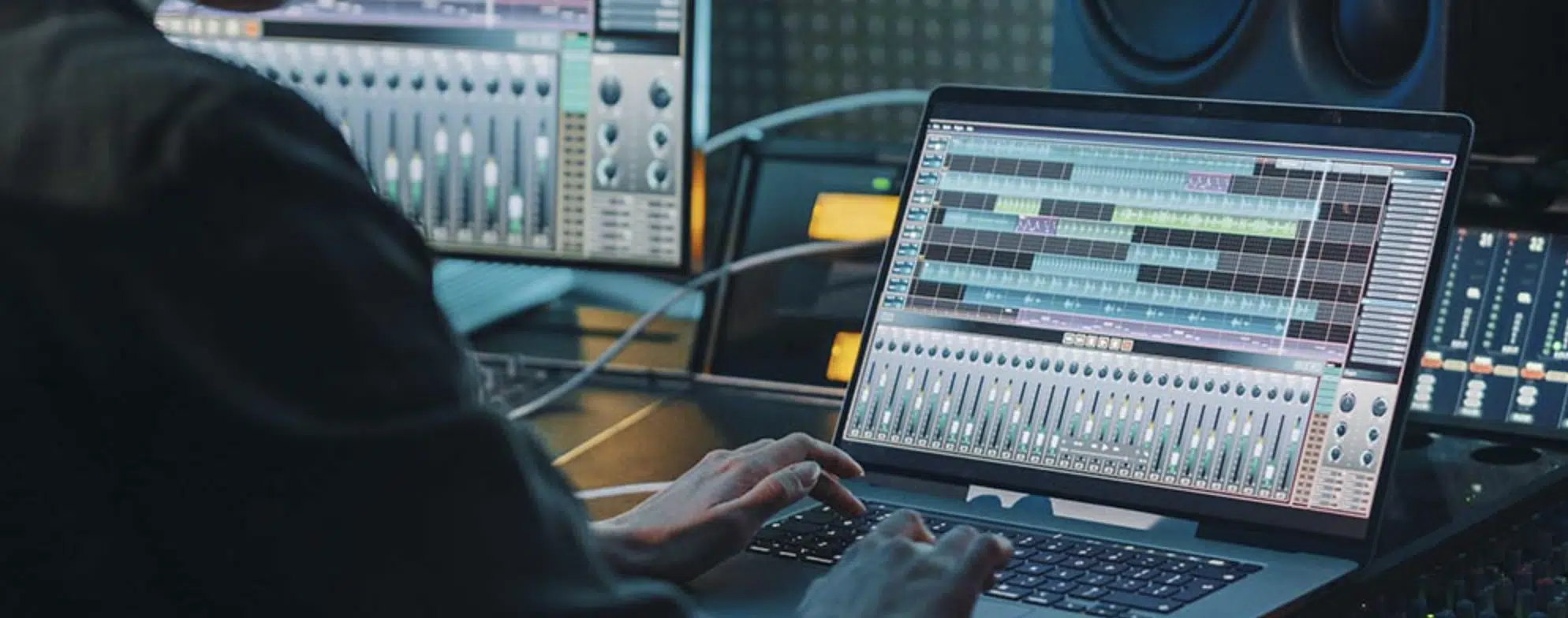How Professional Equipment Shapes EDM Production


Electronic dance music production comes with various challenges, from not knowing where to start to staying motivated to see your project through to the end.
It doesn’t matter if you’re a novice EDM producer or a long-time EDM lover looking to level up your current production setup. This guide can help you.
Discover the benefits of professional equipment, as well as the most important pieces to add to your collection, below.
The Power of MIDI Controllers
Music Instrument Digital Interface or MIDI controllers — also known as MIDI keyboards — are devices that send MIDI data to your computer or another piece of hardware. The keyboard does not produce any sound on its own. Instead, it triggers sounds from another device.
These keyboards come in various sizes, ranging from 25-88 keys, with non-weighted keys, hammer-action keys, and everything in between.
With a MIDI controller, you can “play” virtually any instrument. You can also record songs using a variety of instruments and then combine the sounds to make it seem as though an entire band is playing.
If you’ve ever wanted to compose your own music, a MIDI keyboard makes the entire process easier. You have access to a range of instruments at your fingertips (literally) and can layer melodies, chords, instruments, etc., to create an original piece.
How to Choose a MIDI Controller
If you’re getting ready to upgrade your current MIDI controller or purchase your first one, these tips will help you make the correct choice:
● Choose the right size and number of keys: If you’re a beginner, you can likely get by with a 25-key controller; if you’re more advanced, consider investing in a larger, 88-key version.
● Consider your music background: If you have previous piano experience, you might feel limited by a 25-key controller and would prefer a larger option. Conversely, if you’re new to music production or like using tools like faders, a smaller controller with more control knobs could serve you better.
● Check knob size and functionality: If you buy a controller with small or awkwardly shaped knobs, you’ll likely have a harder time using it correctly and efficiently. If
possible, test controllers in person so you can see which one feels the best before making a decision.
Digital Audio Workstations (DAWs)
A digital audio workstation (DAW) is a software application you can use to record, edit, and produce audio.
With the help of a DAW, you can record tracks, layer beats, incorporate instruments and vocals, apply sound effects, and mix the finished product all from one centralized location.
How to Choose a DAW
The good news is that most MIDI controllers work with any type of digital audio workstation. Before you pick one to add to your EDM production studio, be sure to keep these factors in mind:
● What kinds of instruments do you use the most? If you work primarily with virtual instruments, look for a DAW that caters to that style, such as Fruity Loops, rather than one favored by those who use the music they’ve played and recorded on a guitar, piano, etc. — Pro Tools is a popular option.
● What is your experience level? If you’re new to music production, you might do better with a more streamlined DAW like Garage Band, which is available for free on MAC devices. For more advanced producers, you may prefer something like Logic Pro X.
● What kind of hardware do you use? Many tools, such as Pro Tools and Fruity Loops, are compatible with Apple and Windows devices. Meanwhile, options like Garage Band are only available to Apple users.
Integrating DACs into Your Studio Setup
Digital-to-analog converters, also known as DACs, take digital data and transform it into analog audio signals. They then send the analog signal to an amplifier.
Typically, when you hear a digital recording, you’re hearing an analog signal converted by a DAC.
Here is a quick breakdown of how DACs work:
● An artist lays down a track during the recording process. The microphone picks up the sounds as analog audio signals.
● Recording engineers store the analog signals as digital signals, typically in a digital audio file.
● During playback, the digital-to-analog converter decodes the stored digital signals and converts them into analog audio.
● The DAC then sends the converted signal to an amplifier, which sends music through headphones or stereo speakers.
How to Choose the Best DAC
If you’re looking for the best digital-to-analog converters on the market, keep the following factors in mind:
● Compatibility: Make sure the DAC you’re considering supports a variety of file formats, especially those you intend to play most often.
● Inputs and Outputs: Check that the DAC has all the necessary inputs to connect your digital sources, as well as the outputs to amplifiers, speakers, etc.
● Resolution: Most modern DACs support high-resolution audio. However, it’s best to double-check that your DAC supports at least 24-bit/96kHz.
● Sound Signature: Is the sound signature neutral, warm, detailed, or smooth? Check reviews to see what users say about the converter’s sound.
Synthesizers and Synth VSTs
A synthesizer is an electronic musical instrument that produces a range of sounds using analog or digital circuits. Synth virtual studio technology, or VST, is a type of audio plug-in software that integrates with software synthesizers and digital audio workstations.
How to Choose a Synth VST
When shopping for a synth VST, it’s easy to get overwhelmed. Focus on these elements to ensure you make the best choice for your EDM production needs:
● Prioritize sound quality: Don’t get caught up in long lists of fancy features. Remember that sound is the most critical factor.
● Consider the interface: Look for a synth VST with an easy-to-navigate interface. After all, it doesn’t matter how good the sound is if the tool is too complicated for you to use, right?
● Check the average plugin cost: Some plugins for VSTs are expensive and can easily set you back hundreds of dollars. Consider the average price for the plugins for a tool you’re thinking about using to determine if the overall value is worthwhile.
Level Up Your EDM Production
From midi controls and DACs to DAWs and synthesizers, you can choose from a wide range of equipment to enhance your EDM production process. Use the guidelines and tips shared above to ensure you’re selecting the best pieces that will produce the best results.
Recent Posts
Above & Beyond Announce New Album, ‘Bigger Than All of Us’
Above & Beyond are returning this July with a brand new album, the first one…
DJ And Club Night Discovery Platform ‘Dancefloor’ Launches
The nightlife industry is one that is going through a rough time at the moment…
San Holo Releases 10th Anniversary Documentary ‘What Is Life?’
Following on from his remarkable 10th anniversary tour, San Holo has now released the ‘What…
David Guetta’s massive Monolith tour arrives to Tallinn Song Festival Grounds on August 23
Tallinn Song Festival Grounds will transform into a massive dance floor, when on Saturday, August…
Bad Nonno & Lucky Rose Unite To Take Over The House Scene With ‘One More’
Bad Nonno is not just any producer or artist in the dance music industry, he has inspired…
DJ DALI Chats Performing At Festivals, Music Inspirations, Pressure To Follow Trends & More
DJ DALI has made a name for himself by blending Afro House with Middle Eastern…


